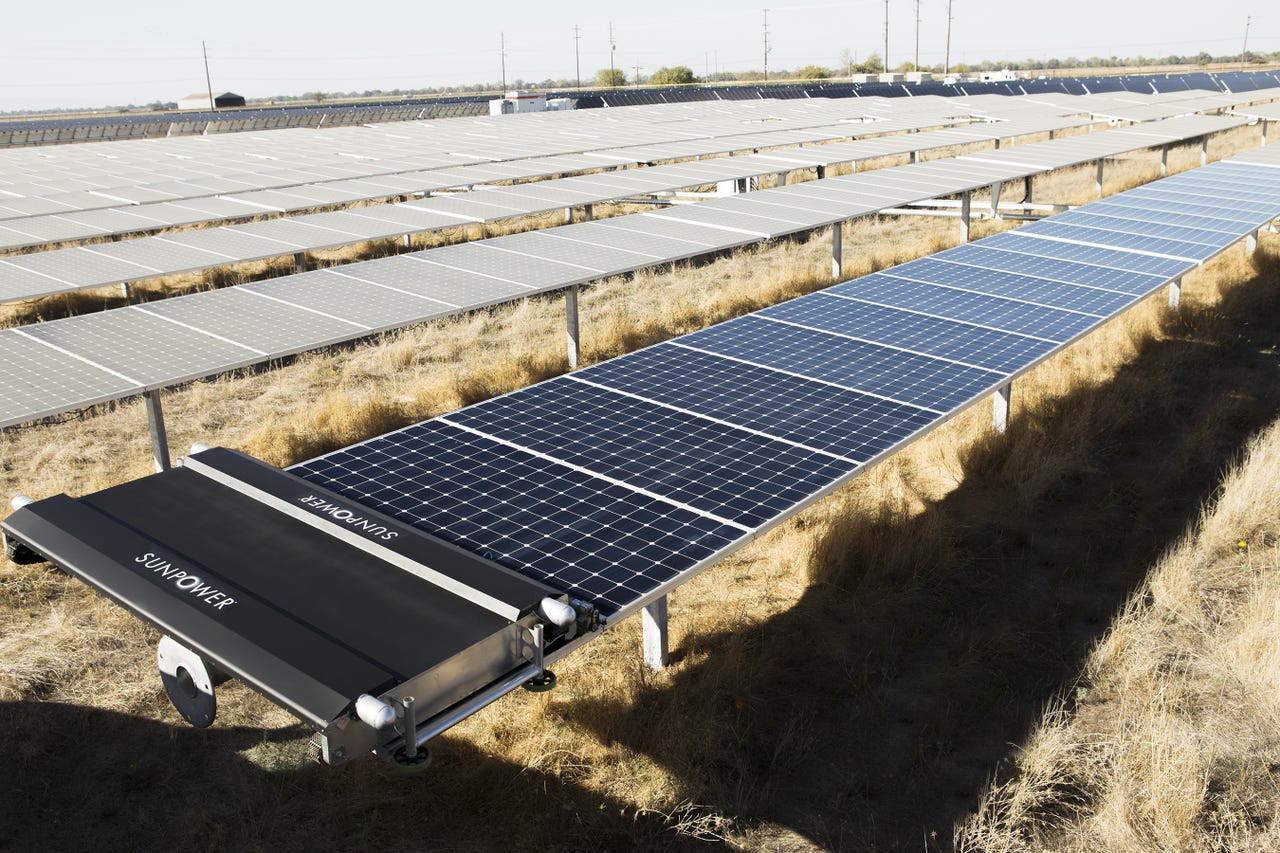Drones and robots make solar panels more efficient


A robot washes a row of dusty solar panels at a SunPower Oasis solar power plant in Yolo County, California. (Image: SunPower)
Robots are infiltrating warehouses, classrooms, farms, and citystreets. Now, they are making themselves useful in the renewable energy industry. SunPower Corporation, a solar cell manufacturer headquartered in Silicon Valley, will use robots and drones to make solar power plants more efficient.
The company is starting construction on its new "Oasis" power plants in North America and China during the next several weeks. In this new generation of power plants, project design is automated using drones and software. The drones fly over a site to gather data, and then the software creates and evaluates thousands of designs and recommends the best options. This way, developers can easily compare potential sites, and customized configurations can make the most out of the available space.
Tom Werner, president and CEO of SunPower, said in a press announcement:
An Oasis solar power plant may be designed 90 percent faster than the time required to design conventional solar power plants. While flat, rectangular-shaped sites are required for other trackers on the market, Oasis can take advantage of unused irregularly shaped areas and slopes up to ten degrees to generate up to 60 percent more energy than conventional technology installed at the same site. Each additional ten acres of usable land on a site may represent two to four more megawatts of power, which can significantly impact a project's bottom line.
The new systems are also being designed with room for agriculture. As solar power becomes widely accepted, it's not always easy to find space to locate large solar arrays. (This is part of the reason that floating solar projects are becoming more common around the world.) The distance between rows leaves just the right amount of room for farming activities, and SunPower is partnering with University of California, Davis to find the ideal crop varieties.
The big star of Oasis is a fleet of robotic panel cleaners that SunPower added to its toolkit when it acquired Greenbotics, Inc., in 2013. Solar panels typically convert approximately 20 percent of the sun's energy into electricity, but if they are dirty, that conversion efficiency is reduced. Dust, pollen, and even bird droppings can build up on solar panels and block a percentage of the sun's light from entering the system.
Read also
Robots glide over rows of solar panels, gently removing dirt. The robotic system uses 75 percent less water than manual-cleaning methods and can operate at night to avoid getting in the way of precious sunlight. According to SunPower, the new robotic method is twice as fast as the current robotic cleaning technology and 10 times faster than manual cleaning methods.
For residential solar installations, the small amount of grime that builds up on solar panels isn't significant enough to make it worth frequently climbing on your roof or hiring someone to clean a few panels. But it's a different story for giant solar power plants, where even small percentages can add up to many lost megawatts, or in other words, less money.